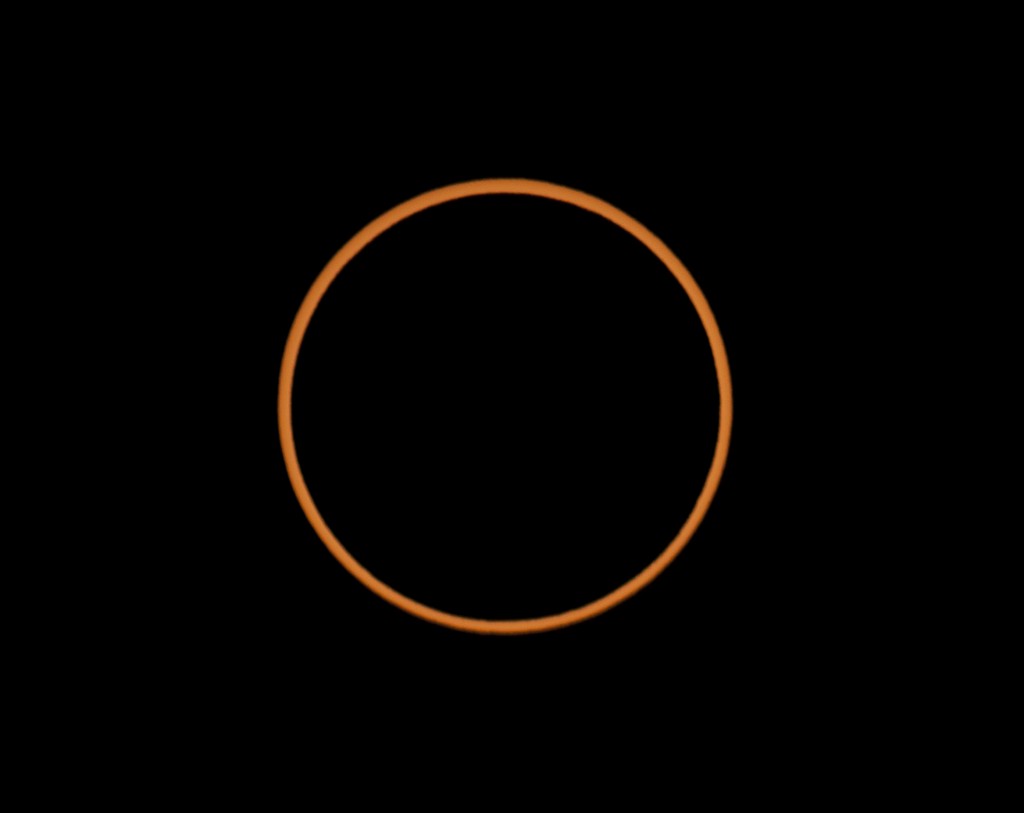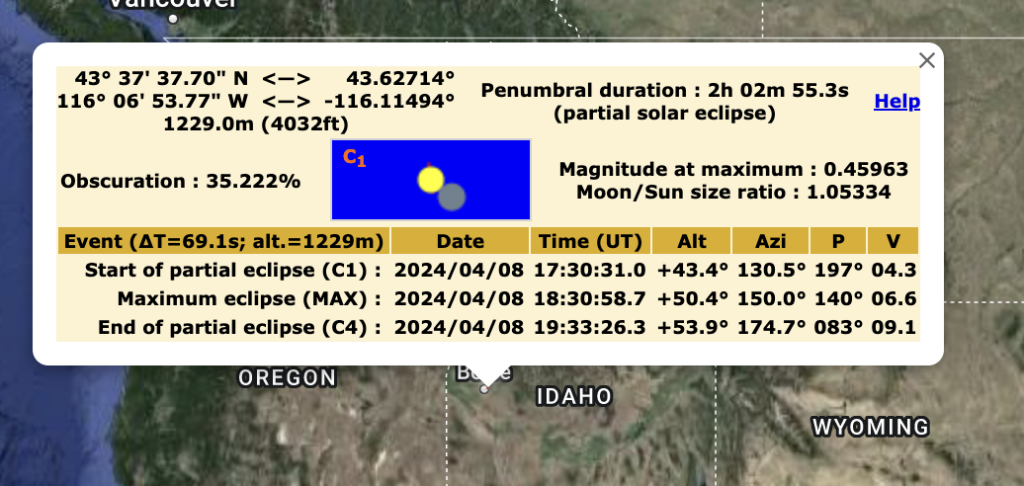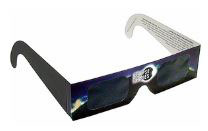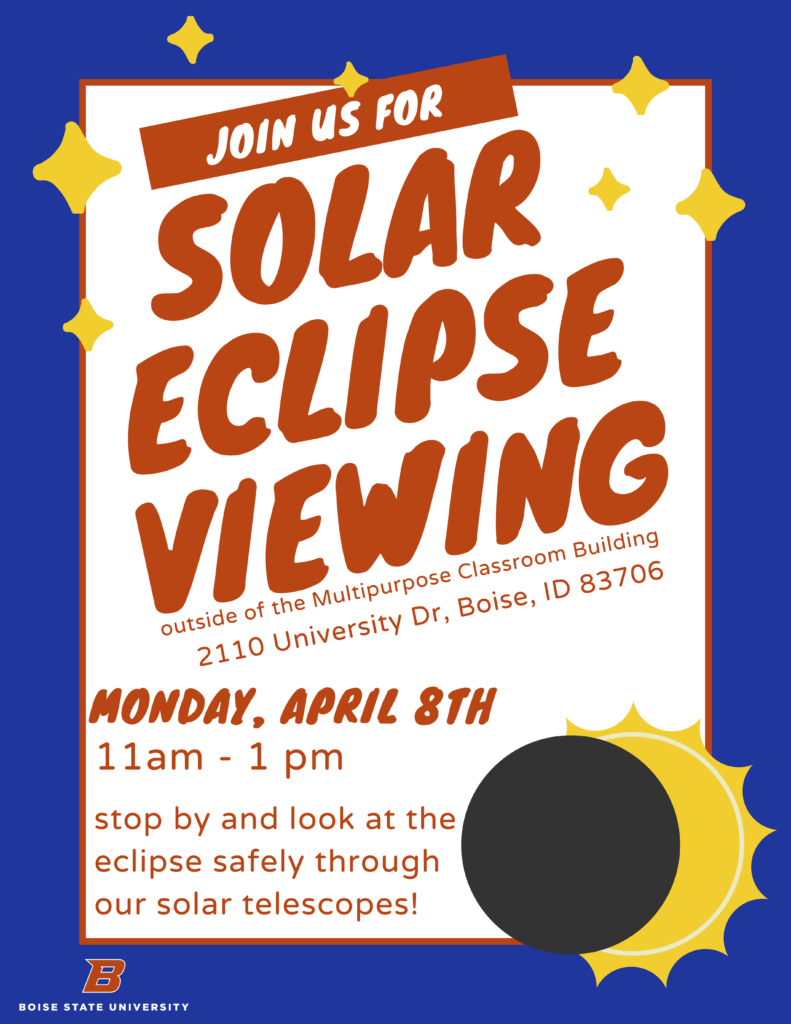
A total solar eclipse will cross the US mid-morning on Mon, Apr 8. This eclipse appears to be the last total solar eclipse that will cross the US until 2045. So when will the eclipse be visible from Idaho, what will it look like, and how best to observe it?
What is a total solar eclipse?

A total solar eclipse occurs when the Moon appears to block all the light from the Sun as seen from somewhere on the Earth. The Moon’s shadow falls on the surface of the Earth, and for people in the shadow, the Sun seems to wink out for several minutes while the Moon crosses over the Sun.
What are the differences between the different kinds of solar eclipses?
A total solar eclipse is when the Moon seems to block all of the light from the Sun.
But sometimes, the Moon is not the right distance from the Sun, and so the Moon only blocks out part of the light from the Sun. That kind of eclipse is usually a partial solar eclipse. For people watching a partial solar eclipse, the Sun may look darker but will not completely wink out.

A special type of partial solar eclipse occurs when the Moon’s center passes over the center of the Sun but the Moon doesn’t completely block out the Sun. That kind of eclipse is called an annular solar eclipse because only an annulus of light from the Sun is visible.
What kind of eclipse is coming on Mon, Apr 8?
The eclipse queued up for us on Mon, Apr 8 is a total solar eclipse. But because the Moon’s shadow is so small compared to the Earth, only people in the “track of totality” will see the Moon completely blot out the Sun. The track of totality for this upcoming eclipse will cross the US from Texas and head northeast up through Ohio, Vermont, and Maine before ending over the Atlantic Ocean.

Because the track of totality does NOT cross over Idaho, that means we will NOT be able to see a total solar eclipse in Idaho, unlike the 2017 solar eclipse which DID cross over Idaho.
So what will we actually see here in Idaho?
Here in Idaho, we will see the Moon cover up only part of the Sun, meaning we will see a partial solar eclipse. Exactly how partial depends on where in Idaho you are, but the farther northwest you are, the less of an eclipse you will see.
For example, in Boise, we’ll see about 35% of the Sun covered by the Moon. If you want to see exactly how partial the eclipse will be where you are, you can use this interactive eclipse map — http://xjubier.free.fr/en/site_pages/solar_eclipses/TSE_2024_GoogleMapFull.html. Click on your location, and a little chart will come up showing you what the eclipse will look like from there. Here’s what I see for Boise:

The “Obscuration” field tells me how much of the Sun will be covered up — 35.222%. The table below that shows me when the different phases of the eclipse will take place, with times given in Universal Time (UT). To convert from UT to Mountain Daylight Savings Time (MT), subtract 6 hours.
So, for example, the start of the partial eclipse, scheduled for 17:30 UT, will occur at 11:30am MT. The “maximum eclipse”, when the maximum amount of the Sun will be covered by the Moon as seen from Boise, will occur at 12:30am MT. NASA also has a website that can help you figure out the timing.
What will the partial eclipse look like, and how can I observe it?
Unfortunately, 35% obscuration is probably small enough that it won’t be easily noticeable to your naked eye — maybe it will seem like the Sun is a little bit clouded over. (And, of course, if the weather is cloudy that day, you probably can’t see anything.) Because, from Idaho, the Moon will never cover all of the Sun during the eclipse, it is NEVER safe to look directly at the Sun.

But you can look at the partial eclipse if you have the right equipment. Eclipse shades are probably the easiest and cheapest way to look at the Sun during an eclipse. Where can you get eclipse shades? Be careful to use a reputable dealer, but they are available from a lot of places online. The astronomy program in Boise State Physics has eclipse shades available for a donation. We will also host an eclipse observing event on campus — see below.
Be sure NOT to use your telescope to look at the eclipse unless you have the right kind of filters. If you point a regular, unfiltered telescope at the Sun, you can literally catch the scope on fire, and you will severely damage your vision looking at the Sun through an unfiltered scope — think about what happens when you use a magnifying glass to magnify the Sun.
Happy eclipsing!
